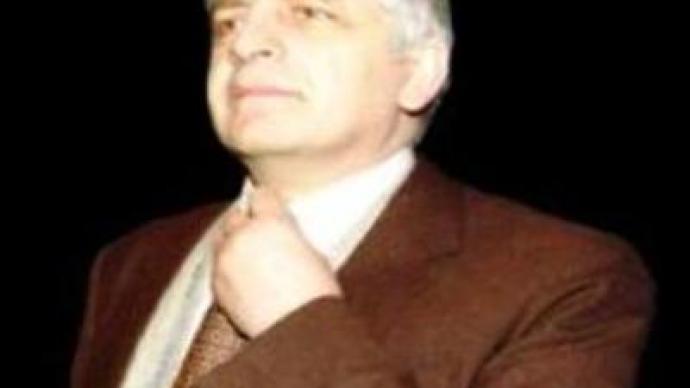First Georgian president to finally rest in peace

The mystery surrounding the death of former Georgian President Zviad Gamsakhurdia is a step closer to being solved. His body was found on Saturday in Grozny after a search by the police.
Zviad Gamsahurdia lived an eventful political life: from dissident to prisoner to president to insurgent. But what happened to him after his death for many is just as much of a story. He was buried four times because of war and political intrigue. Eventually even his family lost track of where his body lay. It's taken the intervention of the new Chechen President to finally uncover his last resting place, and have his remains returned to his family. Zviad Gamsahurdia was born in 1939, the son of one of Georgia's most famous writers, and formed his first human rights group when he was sixteen. He spent the 60s and 70s documenting human rights abuses and publishing anti-Soviet literature, and was once locked in a psychiatric ward for six months by the authorities.Although he reportedly recanted his anti-Soviet beliefs to earn a release from a prison sentence in 1979, he became the charismatic leader of Georgia's growing nationalist movement during the twilight of the USSR. After the break-up of the Soviet Union, he was elected as President of Georgia with an overwhelming majority. But the fate of the national hero quickly unravelled.As president Zviad Gamsahurdia pursued a divisive nationalist policy, labelled “Georgia for the Georgians”. Many in Georgia say that the ethnic strife that plagues Georgia now is, at least in part, his legacy. Quickly, former allies turned against him, and an armed coup late in 1991 forced him to flee the country, finding refuge in Chechnya. He was replaced by the old-time Soviet Minister Eduard Shevarnadze as the leader of Georgia.Mr Gamsahurdia set up a government in exile, and attempted to gain power back by force, but was repelled. On New Year's Eve 1993 he found himself hiding away from pursuit in a peasant's house in the village of Khibula. What happened next is a mystery. His closest supporters said that he shot himself, unable to bear the humiliation and the harshness of his predicament. Others say that his lieutenants betrayed him.Then, his post mortem journey began. His body was buried in the courtyard of one of the houses in a nearby village. Soon, it was reburied in another courtyard.Afraid that his political enemies might find his body, in 1994 his family asked for it to be flown to Chechnya. His grave was damaged by a shell in the first Chechen War, and when the conflict started up again in 1999, his family asked for yet another reburial. This time he was buried in a secret location.Recently, the Gamsakhurdia family asked the Russian government to find his body. His son says that the remains are definitely his father's, but a criminal investigation will be opened over his death, and wrangles are inevitable about his final resting place if he is transported back to Georgia.
You can share this story on social media:












